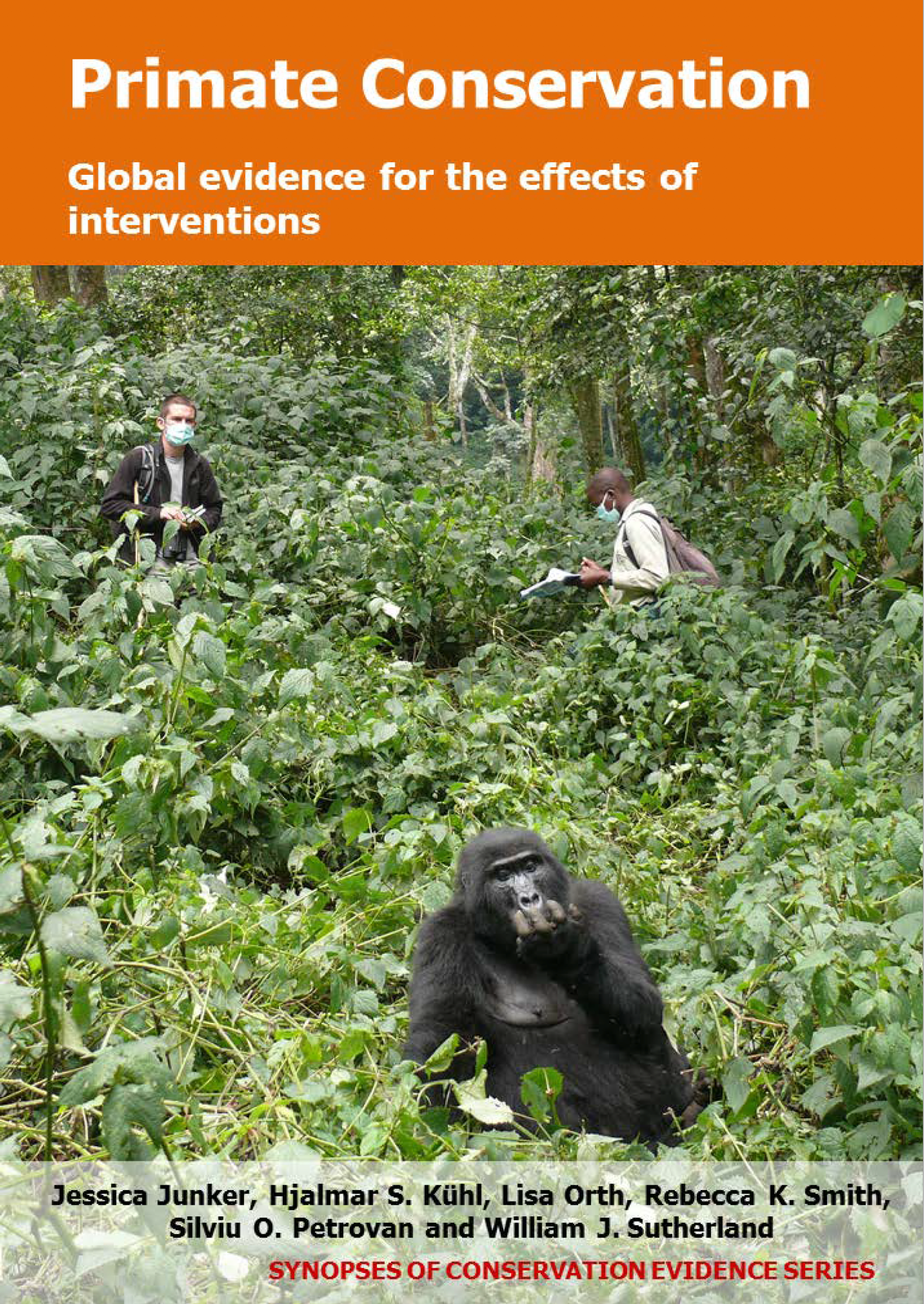Provide training to anti-poaching ranger patrols
-
Overall effectiveness category Unknown effectiveness (limited evidence)
-
Number of studies: 4
View assessment score
Hide assessment score
How is the evidence assessed?
-
Effectiveness
70% -
Certainty
30% -
Harms
0%
Study locations
Supporting evidence from individual studies
A review on the status of mountain gorillas Gorilla beringei beringei in 1972-1989 in tropical montane forest in Eastern Virungas Conservation Area, Uganda found that no gorillas were killed in 1989-1990 after game guards received training 1989 alongside other interventions. In 1989, the number of game guards was also increased from three to 13 men, who were provided with better equipment. At the same time, a permanent research project was established in the area. Human settlers were relocated from the most important gorilla habitat inside the Gorilla Game Reserve (an area 3 km2 in size), within the Eastern Virungas Conservation Area. The study does not distinguish between the effects of the different interventions mentioned above.
Study and other actions testedA before-and-after trial and site comparison in 1976-1988 in tropical forest of the Volcanoes National Park, Rwanda found that the number of immature mountain gorillas Gorilla beringei beringei on the Rwandan side of the park increased and snares decreased alongside the removal of cattle and other interventions. The number of immature individuals increased by 22% on the Rwandan side of the park, but had declined by 30% on the side of the park in the other two countries. No statistical tests were carried out to determine whether these differences were significant. Patrols were initiated in 1979, however, the study did not report on further details on the anti-poaching patrols. Funds provided by a tourist programme enabled the training, equipping and management of the anti-poaching patrols. In 1976, all cattle were removed from the park in Rwanda. A conservation education programme was also implemented, but no further details of this programme were reported. The study does not distinguish between the effects of the different interventions mentioned above.
Study and other actions testedA before-and-after trial in 2004-2009 in tropical forest in the Gibbon Wildlife Sanctuary in Assam, India found that a population of hoolock gibbons Hoolock hoolock increased by 66% over five years after training, monitoring and legal orientation programmes were carried out for the sanctuary staff along with other interventions. The gibbon population increased from 64 individuals in 17 groups in 2004 to 106 individuals in 26 groups (and five solitary males) in 2009. Canopy cover increased by 3.5% and degraded forest decreased by 4.1%. However, no statistical tests were carried out to determine whether these differences were significant. Families within local communities that were selected through socio-economic studies were also provided with more efficient stoves, bio-gas plants, handlooms and ducks. Local communities received alternative income-generation through training in mushroom cultivation, honeybee keeping and duck husbandry and a large-scale education and awareness programme was implemented to promote gibbon conservation within Assam and other northeastern states. The study does not distinguish between the effects of the different interventions mentioned above.
Study and other actions testedA before-and-after study in 2009-2012 in tropical forest in Takamanda National Park, southeastern Cameroon found that after training anti-poaching rangers in the ‘Gorilla Guardian’ programme initiated in 2008 along with other interventions, no more incidents of Cross River gorilla Gorilla gorilla diehli poaching occurred. Guardians were selected by their respective communities and underwent training in gorilla ecology and nest identification, monitoring and data collection and Cameroon wildlife law. The programme started with six guardians from communities in three forest areas near important gorilla sites. Two other communities were added to the network in 2011 and because of increased interest in the programme, two more communities joined in 2012. Communities were put in control of the monitoring of illegal activities that threaten gorilla survival in nearby forests and were directly involved in gorilla research and conservation management. The study does not distinguish between the effects of the different interventions mentioned above.
Study and other actions tested
Where has this evidence come from?
List of journals searched by synopsis
All the journals searched for all synopses
This Action forms part of the Action Synopsis:
Primate Conservation
Primate Conservation - Published 2017
Primate Synopsis





)_2023.JPG)














